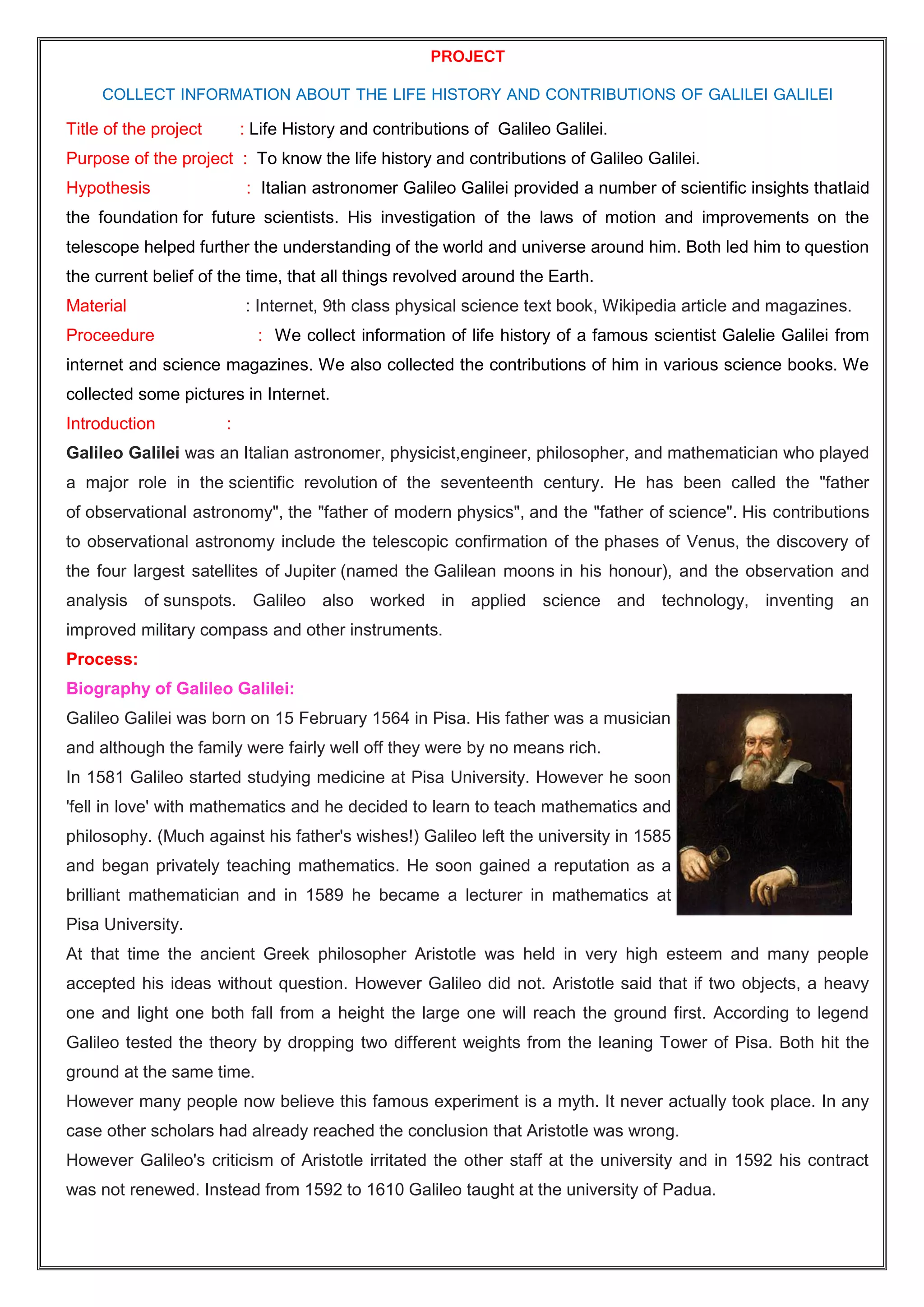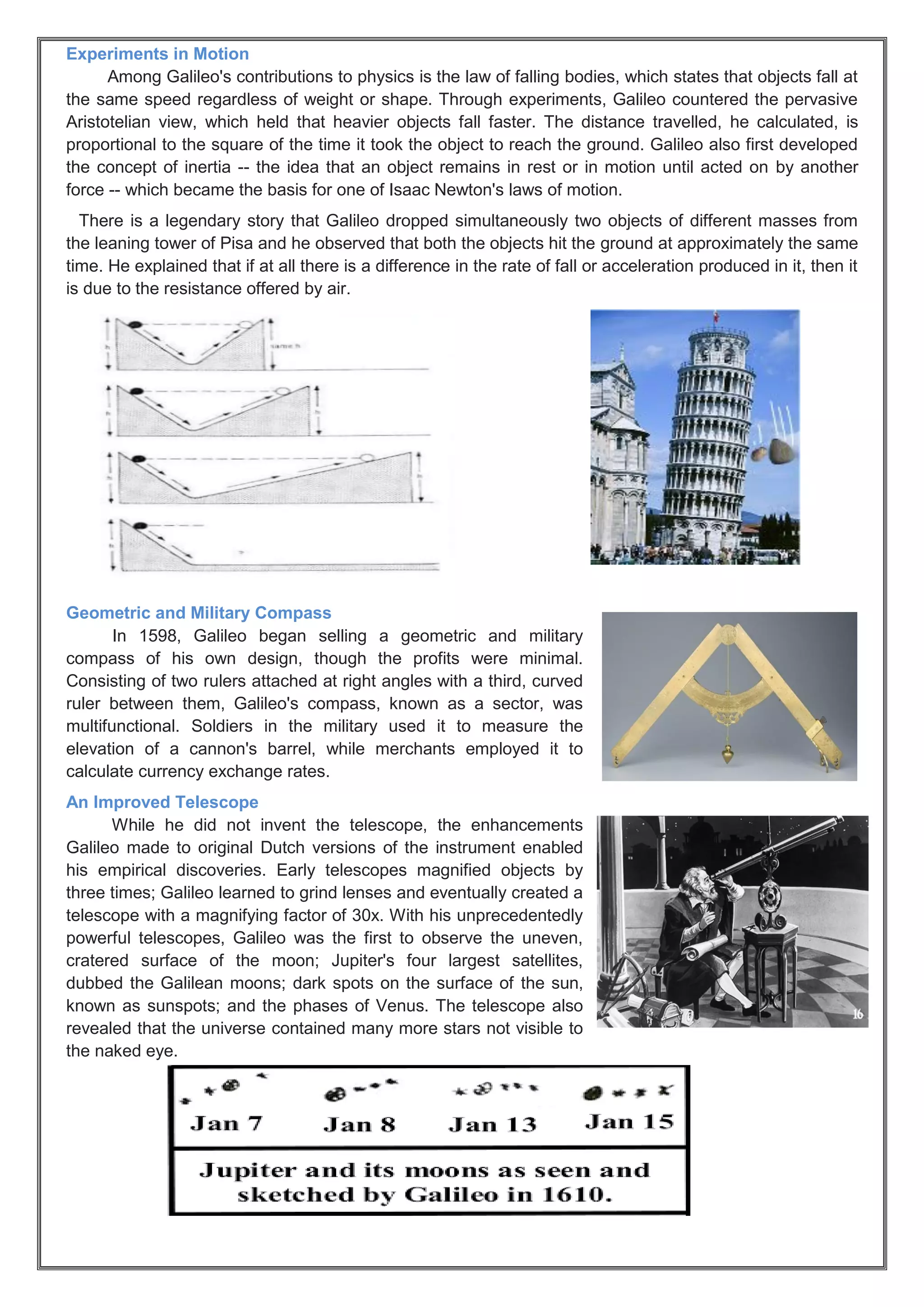Galileo Galilei was an influential Italian scientist from the 1600s. He made several important discoveries using self-improved telescopes, including the phases of Venus, moons orbiting Jupiter, and sunspots. Galileo also studied motion and developed early concepts of inertia. His work supported the Copernican model of a sun-centered solar system and challenged the Earth-centered Aristotelian view dominant at the time, bringing him into conflict with the Catholic Church. Galileo made enduring contributions to observational astronomy and the scientific method through his innovative experiments and evidence-based approach.



![The Case for Heliocentrism
In the 16th century, Polish astronomer Nicolaus Copernicus
became the first scientist to promote a model of the solar system in
which the earth orbited the sun rather than the other way around.
Galileo's observations discredited the Aristotelian theory of an earth-
centered solar system in favor of the Copernican heliocentric model.
The presence of moons in orbit around Jupiter suggested that the earth
was not the sole center of motion in the cosmos, as Aristotle had
proposed. Furthermore, the realization that the surface of the moon is
rough proved untrue the Aristotelian view of a perfect, immutable
celestial realm. Galileo's discoveries -- including the theory of solar
rotation, as suggested by shifts in sunspots -- incurred the wrath of the
catholic Church, which espoused the Aristotelian system. Upon finding him guilty of heresy in 1633, the
Roman Inquisition forced Galileo to rescind his support of heliocentrism and sentenced him to house
imprisonment. Galileo was still under house arrest when he died in 1642.
Thermometer
Galileo did invent a thermometer, called Galileo's air thermometer (more accurately termed
a thermoscope), in or before 1603.
Pendulum clock
Galileo discovered the key property that makes pendulums useful timekeepers: isochronism, which
means that the period of swing of a pendulum is approximately the same for different sized
swings.[3][4] Galileo had the idea for a pendulum clock in 1637, which was partly constructed by his son
in 1649, but neither lived to finish it.
Interpretation of the student: We collect the information of the life history and contributions of Galileo
Galilei from internet. We collect pictures of his contributions in various science books. we know that he
invented the pendulum clock, compass, thermometer and wrote two books. when he was 72, be became
blind, he most likely lost his sight from cataracts or glaucoma. But there was theories he got blinded by
telescope reasearch.
Conclusion: After completion of this project we know that his reasearch, works and books taught about
astronomy. His inventions inspired people to make innovations. Without him, we would still think that the
sun and all the planets revolve around the earth and it would affect how we view space and time. Some of
his theories had mistake but he used his reasearch to improve them and that set examples for other
scientists.
References:
Wikipedia article.
Science magazines.
9th
class text book.
http://www.localhistories.org/
K.Venkataramana. Phone No: 80084 23323 E.Mail: kvr.lohith@gmail.com](https://image.slidesharecdn.com/9thembiographyofgalileogalilei-220922025545-115d8824/75/9th-EM-biography-of-galileo-galilei-pdf-4-2048.jpg)
